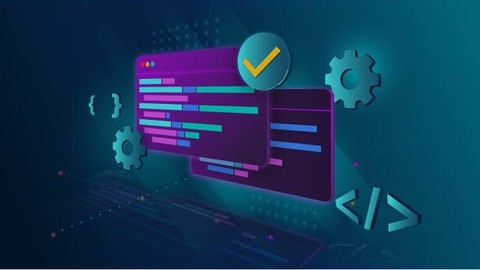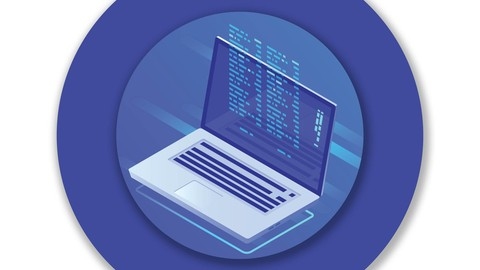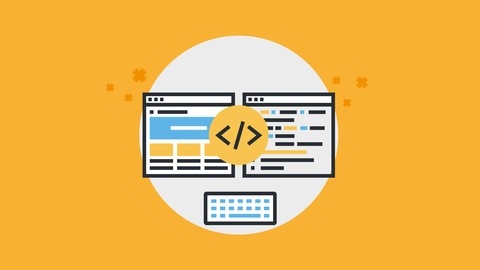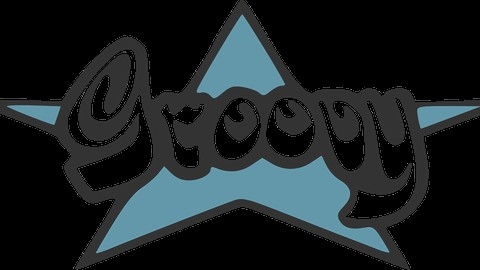Apache Groovy is a dynamic language that runs on the Java Virtual Machine (JVM).
It’s known for its conciseness, flexibility, and powerful features.
Learning Groovy can be beneficial for both Java developers and beginners, enhancing existing skills, building web applications, or opening new career opportunities.
Finding the perfect Groovy course on Udemy can be challenging, with countless options available, each with its own strengths and weaknesses.
You’re looking for a comprehensive, engaging, and practical course that guides you from the basics to advanced topics.
We’ve reviewed many Groovy courses on Udemy, and The Complete Apache Groovy Developer Course is our top pick.
This course stands out for its depth, its hands-on approach, and its focus on practical skills.
You’ll learn everything from basic syntax to advanced topics like metaprogramming and working with the Groovy Development Kit.
The instructor provides clear explanations and engaging exercises to ensure that you master every concept.
This is just one of the many great Groovy courses available on Udemy.
If you’re looking for a more focused approach, or if you have specific learning goals, we have plenty of other options to explore.
Continue reading to find the best Apache Groovy course for you.
The Complete Apache Groovy Developer Course
You’ll start by installing the necessary tools like the Java JDK and Groovy itself on your system.
Right from the beginning, the course takes a hands-on approach with exercises and quizzes to reinforce what you learn in each section.
The instructor will walk you through the solutions, ensuring you grasp the concepts thoroughly.
You’ll dive into Groovy basics like data types, operators, collections, and control structures.
The course then moves on to object-oriented programming concepts like classes, inheritance, and interfaces, with a focus on Groovy’s unique features like traits and Groovy beans.
One of the highlights is the in-depth coverage of metaprogramming, both at runtime and compile-time.
You’ll learn about the meta-object protocol, category classes, and AST transformations, which are powerful tools for extending Groovy’s capabilities.
The course also covers practical topics like working with builders for generating markup, JSON, and object graphs.
You’ll learn how to interact with REST services, handle XML and JSON data, and work with the Groovy Development Kit (GDK) for file I/O, threads, and database programming.
Additionally, you’ll explore templates for generating web pages, code, and emails, as well as working with dates in Groovy.
The course even touches on contributing to the Groovy project itself and debugging in IntelliJ.
Groovy Fundamentals For Testers - Step By Step
You’ll start with an introduction to Groovy and setting up the environment on Windows and Mac machines, including installing Java, Groovy, IntelliJ IDEA, and Eclipse.
The course dives deep into Groovy basics, covering workspaces, packages, classes, objects, data types, variables, type conversion, methods with parameters and return types, static variables and methods, arrays, constructors, and strings.
You’ll learn about control statements like if-else, switch, while, and for loops, along with break and continue statements.
Object-Oriented Programming (OOP) concepts are thoroughly covered, including inheritance, abstract classes, interfaces, method overloading, and overriding.
The course also explores collections like lists, sets, and maps, as well as working with files and reading properties files.
You’ll gain expertise in JSON and XML slurpers, which are powerful tools for parsing JSON and XML data.
Exception handling is also covered, ensuring you can handle errors effectively in your Groovy programs.
The course introduces you to Apache POI, a library for working with Microsoft Office file formats like Excel.
You’ll learn how to read and write Excel data using column numbers and names, as well as get row and column counts.
Closures, a powerful feature of Groovy, are explored in-depth.
You’ll learn about closures with parameters, accessing variables, using closures as method parameters, closures with return types, and working with closures and collections using methods like find, findAll, any, every, and collect.
Groovy Programming Fundamentals for Java Developers
The course starts by guiding you through setting up your development environment, including installing Groovy on Mac or Linux using sdkman and creating a Groovy project in IntelliJ IDEA.
You’ll then dive into exploring the Groovy toolset and using the Groovy Console to execute and examine code.
The course covers essential Groovy operators like the null-safe dereference, Elvis, spaceship, spread, and range operators.
A significant portion is dedicated to working with strings in Groovy, including string interpolation, heredocs, and using regular expressions with operators like pattern, slashy, find, match, and capture groups.
Collections are a core part of the curriculum, covering lists, sets, maps, accessing elements, truthiness, composite collections, processing collections, filtering, finding matching elements, testing elements, collecting elements to lists or maps, and creating aggregate functions with inject.
The course also delves into key Groovy language features like default imports, main methods, creating classes and instances, adding methods and state, inheritance, overriding methods, POGOs (Plain Old Groovy Objects), operator overloading, string equality, returning multiple values from methods, autogenerating equals and hashCode with AST transformations, and named constructors.
Throughout the course, you will learn by creating and debugging Groovy projects, executing code in the console, and practicing with hands-on examples.
The syllabus covers a comprehensive range of topics to help you become proficient in Groovy programming as a Java developer.
Learn groovy programming basics
This course starts by introducing you to Groovy, explaining what it is and its purpose.
After a quick quiz to test your understanding, you’ll dive into setting up the necessary environment, including installing Java, configuring the classpath, and installing Eclipse with the Groovy plugin.
Once the setup is complete, the course will teach you the basics of Groovy.
You’ll learn how to create your first Groovy project, script, and class.
It will also cover comments, converting Java classes to Groovy, and executing scripts in detail.
Additionally, you’ll explore identifiers, variables, and object creation in Groovy.
The course then moves on to more advanced topics like loops, arrays, lists, and maps.
These are essential data structures in Groovy, and you’ll learn how to work with them effectively.
One of the most practical aspects of the course is its coverage of file I/O operations.
You’ll learn how to read from files, both line by line and word by word.
The course also covers other file operations, such as writing to files.
Throughout the course, you’ll have the opportunity to practice what you’ve learned through hands-on exercises and projects.
This practical approach will help solidify your understanding of Groovy and prepare you for real-world applications.
Groovy Scripting for Developers / Testers
The course starts by introducing programming concepts and setting up the environment with Java, Eclipse, and the Groovy plugin.
You’ll learn about Groovy classes, objects, methods, and constructors, which are fundamental building blocks.
From there, you’ll dive into control structures like conditions, for loops, while loops, and for-each loops.
Working with arrays and string handling will also be covered.
The course teaches you how to read files using FileReader and BufferedReader, which are essential skills.
But it’s not just theory - you’ll get hands-on practice with programming exercises.
You’ll write programs for number swapping, checking even/odd numbers, implementing a grading system, generating the Fibonacci series, checking prime numbers, reversing strings, and checking palindromes.
These practical exercises will solidify your understanding of Groovy.
The course is well-rounded, covering both theoretical concepts and practical applications.
You’ll learn the basics of Groovy programming and then apply those skills to solve real-world problems.
Intro to web programming with Groovy on Grails
The course starts by introducing you to programming paradigms, type safety (static vs dynamic), and coding style conventions.
This lays a solid foundation for understanding the core concepts.
Moving forward, you’ll get an overview of the project you’ll be working on throughout the course.
The syllabus covers setting up the necessary tools and getting started as a first-time developer, addressing common gotchas along the way.
You’ll learn about dependency management, a crucial aspect of any modern web application.
The course dives deep into the core components of a Grails application.
You will learn how to develop your domain model by creating new Domain Objects.
Additionally, you’ll structure your application’s business logic by creating services.
The syllabus also guides you through constructing controllers, which act as the bridge between your application’s model and views.
For the frontend, the course covers GSP’s (Groovy Server Pages), which are used for rendering views in Grails applications.
You’ll also learn how to run your Grails application locally during development.






